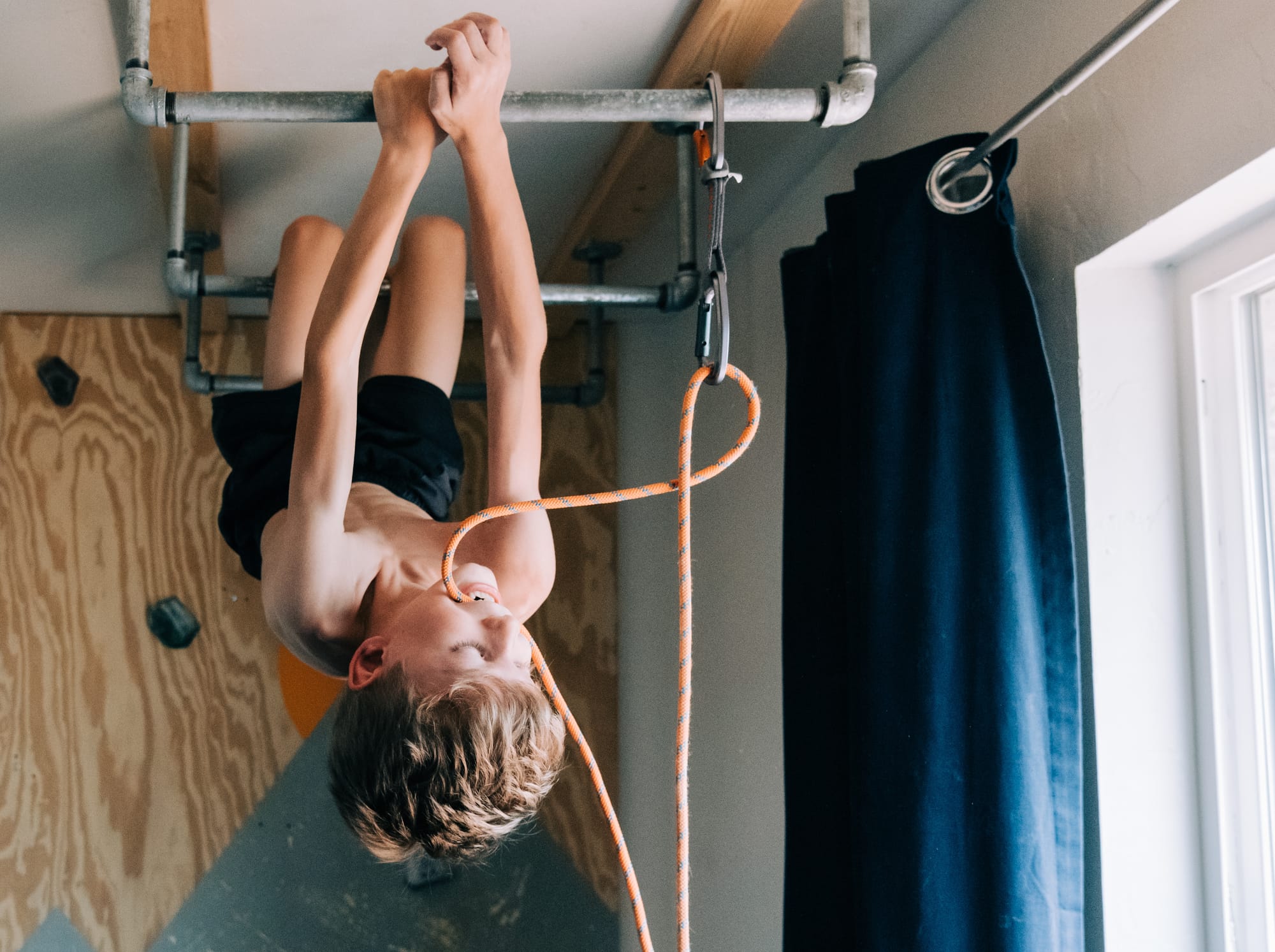Is Weightlifting at a Young Age Safe? (Will It Stunt Growth?)
Weightlifting at a young age seems dangerous — but is it so? Here, we explore the risk of injuries and stunted growth associated with the sport.

You walk into the gym and see a kid barely taller than your hips deadlift 40 kg.
What’s your first thought? Is it “Omg, that’s sOOOooOo dangerous? How could their parents let them do this?!”
🚨 Newsflash: weightlifting at a young age is generally perfectly safe (with a few caveats worth making, but we’ll cover those later). Is that hard to believe? If it is, you have to continue reading.
Is weightlifting at a young age safe?
The most common reservation people have about weightlifting at a young age is that it could cause growth plate injuries.
FYI, growth plates are the areas of new bone growth in children and teens.
These add length and width to the bone. As children grow, the growth plates harden into solid bone and “close”; this usually happens near the end of puberty — usually between 13 and 15 for girls and 15 and 17 for boys.
Imaginably, the consequences of growth plate injuries can be devastating.
If the damage is bad enough, a child’s bones may stop growing prematurely, stunting physical development and causing functional problems.
But here’s the question that truly matters: is weightlifting at a young age associated with a higher incidence of growth plate injuries?
Research says no.
To quote this study published in Sports Health:
“A well-supervised strength training program has no greater inherent risk than that of any other youth sport or activity.”
In fact:
“Sports such as gymnastics and baseball, which involve repetitive impact and torque, provide a greater risk of epiphyseal [growth plate] injury.”
Many other studies agree: “Under proper supervision, these activities are no more (and usually less) injurious than other sports activities.”
It’s not just safe, but beneficial
Weightlifting at a young age offers many physical and emotional benefits, including improved:
- Strength
- Bone density
- Balance
- Lipid profiles
- Muscle mass
- Personal self-esteem
- Cognitive functioning
That’s not all. If a child participates in other sports, strength training could help protect their muscles and joints from injuries sustained in those sports.
For example, strengthening the:
But there is such a thing as “too young” 👶
Of course, here come the caveats.
While the age at which a child should start strength training can depend on their physical literacy and emotional readiness, in general, most should be able to practice it safely between 7 and 8 years old when they have:
- Good balance
- Control of their body
- Ability to follow instructions
It’s recommended that children start with bodyweight exercises before progressing to free weights and machines.
For reference, a 2022 study also published in Sports Health set out the following guidelines:
“The appropriate age for the initiation of formal weightlifting training can be as young as 10 to 11 years, provided that the biological age of the child and the emotional maturity of the child are reasonable.”
“Wait,” you may be wondering, “That’s different from the previous recommendation of starting between 7 and 8 years old?”
It is. And to explain why, we’ll have to distinguish between strength training and formal weightlifting training:
A very general term that’s somewhat used similarly to resistance training, the use of resistance (it could be bodyweight, free weights, or machines) to improve muscular strength and endurance
In that particular study, formal weightlifting refers to Olympic lifting, which 2 highly technical movements: 1) clean and jerk and 2) snatch
Just look at the movements, and you’ll understand the higher age requirements for formal weightlifting.
(It’s also worth noting that most children don’t go into formal weightlifting training programs with absolutely zero lifting experience — chances are, they would, at the very least, be familiar with the basic bodyweight movements.)
How to approach weightlifting at a young age
Are you a parent or guardian of a child of the right age who is interested in starting strength training or weightlifting?
Ideally, you should first talk to your child’s doctor and get their clearance before proceeding (to ensure your child has no medical conditions that could make strength training dangerous or tricky).
Then, hire a certified fitness professional who’s highly experienced in training children and youths.
Either you or the fitness professional should take time to inform your child of the dangers of anabolic steroids and other performance-enhancing substances. (Current studies report that the rate of anabolic steroid use in adolescents ranges from 1.5% to 7.6%.)
When screening potential fitness professionals, be sure to get a sense of:
- How they’ll structure the training program (what are their considerations, etc.)
- How they judge when a child or youth is ready to progress in weight
- Their capacity to provide one-on-one supervision during training sessions
👋 Don’t forget about yourself
Encouraging and providing your child with the means to begin strength training or weightlifting at a young age is great.
But don’t forget about keeping yourself active, too! So, if you’ve recently been a little ~lackluster~ with keeping up with your gym routine (or just never got into the groove in the first place), maybe you need to hit the refresh button real quick with your plan?
I mean, there’s really no harm in trying with GymStreak.
Just input your training goals, preferences, and experience into the app, and you’ll get a done-for-you, fully personalized gym routine in seconds.
Now, you’d be able to supervise that fitness professional supervising your child and work on your fitness journey at the same time. Win.
Here's a sneak peek of the app:
References
Bidzan-Bluma, Ilona, and Małgorzata Lipowska. “Physical Activity and Cognitive Functioning of Children: A Systematic Review.” International Journal of Environmental Research and Public Health, vol. 15, no. 4, Apr. 2018, p. 800. PubMed Central, https://doi.org/10.3390/ijerph15040800.
Dahab, Katherine Stabenow, and Teri Metcalf McCambridge. “Strength Training in Children and Adolescents.” Sports Health, vol. 1, no. 3, May 2009, pp. 223–26. PubMed Central, https://doi.org/10.1177/1941738109334215.
Lloyd, Rhodri S., et al. “Position Statement on Youth Resistance Training: The 2014 International Consensus.” British Journal of Sports Medicine, vol. 48, no. 7, Apr. 2014, pp. 498–505. PubMed, https://doi.org/10.1136/bjsports-2013-092952.
Pierce, Kyle C., et al. “Weightlifting for Children and Adolescents: A Narrative Review.” Sports Health, vol. 14, no. 1, Nov. 2021, pp. 45–56. PubMed Central, https://doi.org/10.1177/19417381211056094.
Stratton, G., et al. “BASES Position Statement on Guidelines for Resistance Exercise in Young People.” Journal of Sports Sciences, vol. 22, no. 4, Apr. 2004, pp. 383–90. PubMed, https://doi.org/10.1080/02640410310001641629.

